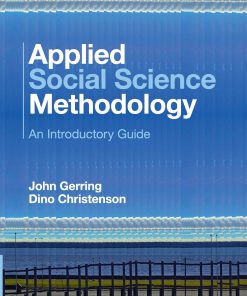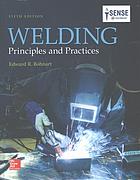Case Study Research Principles and Practices 2nd Edition John 1316856666 9781316856666
$50.00 Original price was: $50.00.$25.00Current price is: $25.00.
This completed downloadable of Case Study Research Principles and Practices 2nd Edition John Gerring

Instant downloaded Case Study Research Principles and Practices 2nd Edition John Gerring pdf docx epub after payment.
Product details:
- ISBN 10: 1316856666
- ISBN 13: 9781316856666
- Author: John Gerring
Case Study Research: Principles and Practices provides a general understanding of the case study method as well as specific tools for its successful implementation. These tools are applicable in a variety of fields including anthropology, business and management, communications, economics, education, medicine, political science, psychology, social work, and sociology. Topics include: a survey of case study approaches; a methodologically tractable definition of ‘case study’; strategies for case selection, including random sampling and other algorithmic approaches; quantitative and qualitative modes of case study analysis; and problems of internal and external validity. The second edition of this core textbook is designed to be accessible to readers who are new to the subject and is thoroughly revised and updated, incorporating recent research, numerous up-to-date studies and comprehensive lecture slides.
Table of contents:
Part I Case studies
1 Surveys
1.1 Intellectual histories
1.2 Bibliometrics
1.3 Exemplars
1.4 Summary
2 Definitions
2.1 Case
2.2 Case study
2.3 Additional terms
2.4 Summary
Part II Selecting cases
3 Overview of case selection
3.1 Strategies and criteria
Intrinsic importance
Independence
Within-case evidence
Logistics
Representativeness
3.2 Clarifications
3.3 Validation
3.4 Summary
4 Descriptive case studies
4.1 Typical
4.2 Diverse
4.3 Summary
5 Causal case studies
5.1 Exploratory
Extreme
Index
Deviant
Most-similar (exploratory)
Most-different
Diverse (causal)
5.2 Estimating
Longitudinal
Most-similar (estimating)
5.3 Diagnostic
Influential
Pathway
Most-similar (diagnostic)
5.4 Summary
6 Algorithms and samples
6.1 Random sampling
6.2 Algorithmic (“quantitative”) case selection
Advantages
Limitations
Conclusions
6.3 The size question revisited
6.4 Summary
Part III Analyzing cases
7 A typology of research designs
7.1 Case study evidence
Cross-case
Longitudinal
Within-case
Tentative conclusions
7.2 Multimethod studies
Case study first
Large-C first
In tandem
Conclusions
7.3 Summary
8 Quantitative and qualitative modes of analysis
8.1 Quantitative analysis
8.2 Qualitative analysis
8.3 Standards for qualitative inquiry
8.4 Rules of thumb for qualitative inquiry
Utilizing sources
Identifying a hypothesis/theory
Rival explanations
Testable hypotheses
Counterfactual thought experiments
Temporality
Background assumptions
8.5 Summary
Part IV Validity
9 Internal validity
9.1 Manipulable causes
9.2 Causal comparability
9.3 Front-door approaches
9.4 Transparency, replicability
9.5 Separation of theory formation and testing
9.6 Informative estimates of uncertainty
9.7 Summary
10 External validity
10.1 Sample representativeness
10.2 A two-level game
Cause-in-fact versus counterfactual cause
Causes-of-effects versus effects-of-causes
10.3 Establishing scope conditions
What is the right scope?
10.4 Assessing external validity
10.5 Summary
Part V Conclusions
11 Tradeoffs
People also search:
case study research method
case study research and applications pdf
case study research process
case study research and applications
john gerring case study research principles and practices
You may also like…
Politics & Philosophy - Social Sciences
Engineering
Engineering
Automotive Accident Reconstruction: Practices and Principles 2nd Edition Donald E. Struble
Biology and other natural sciences - Plants: Agriculture and Forestry
Education Studies & Teaching - School Education & Teaching
Case study research and applications : design and methods Sixth Edition. Edition Campbell
Education Studies & Teaching












